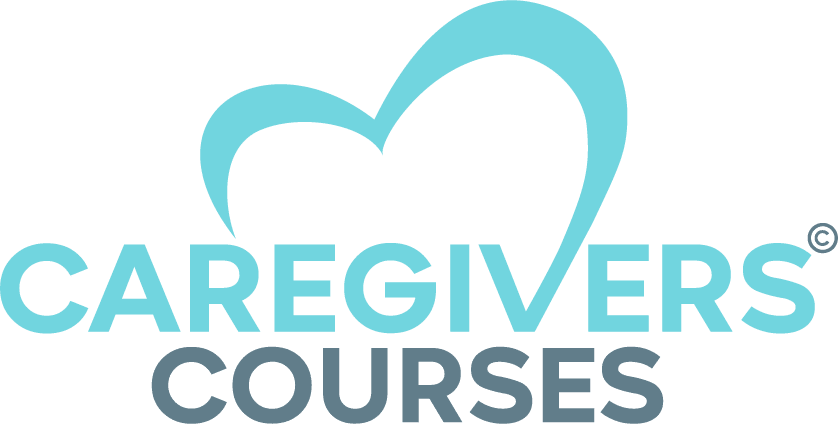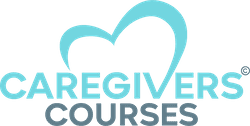Maintaining daily caregiver notes is a basic principle of caregiving. It is quite simple for caregivers to become mired in the daily grind, seeing just what is directly in front of or behind them. Their work is demanding and hectic, but it’s also very fulfilling because it’s dedicating much of their time and focus to another person. But don’t worry—there are easy strategies to keep yourself from burning out and to view your path as a caregiver from a wider angle.
Although writing notes regularly can seem difficult, you can use a few strategies and suggestions to make the process go more smoothly. There are many caregiving courses that help you write professional daily notes. Alternatively, you can search for a good caregiver note template to get an idea of what a caregiver daily care notes looks like. In this article, you will learn everything you need to know about caregiver daily care notes while exploring some caregiver daily care notes examples.
What Are Daily Care Notes?
Daily care notes describe the care given to each client individually. Professional caregivers should keep daily care notes to document the needs, difficulties, and activities of the people under their care in a more thorough, individualized manner. Care notes are vital to documentation; they provide useful information for reviewing and updating care plans and recording changes.
Writing caregiver notes serves as a vital channel for staff communication and offers insight into the state of care delivery inside an organization. The caregiver might see modifications in the client’s health, behavior, or emotions.
Importance of Caregiver Daily Notes
Caregiver notes play a crucial role in letting Medicaid, the state insurance program, and the providers understand exactly what is happening while caregivers perform their duties. To support the continued provision of services for disabled persons, caregivers can provide the state with a quarterly report every three months. Upon reviewing a quarterly summary, Medicaid seeks information about these elements:
- How was the client’s goal being worked toward?
- How was the objective of community engagement attained?
- How did the client behave in general?
- Has there been any noticeable advancement or regression?
Please keep these items in mind while you write your notes. The more thorough your notes are, the better the quarterly overview you can produce, which guarantees that the state will keep paying for the person’s care and that you, as the caregiver, will continue to work with them.
How to Start a Daily Care Note?
Use a plain notebook or an elegant blank diary as your daily writing buddy. You might retain loose-leaf paper in a binder or folder, or you could use printed sheets with questions and useful documentation.

Start your journaling practice with a digital document or even a spreadsheet if you’re more at ease with a computer. New and creative computer and mobile programs designed for caregivers are often coming out that can help you succeed. The fact that your notebook serves your needs is what matters most.
Even if it’s just for your own eyes, think about what you truly should be monitoring on your loved one’s behalf and how you would feel most comfortable recording your thoughts and emotions.
Components of Caregiver Daily Care Notes
For thorough and accurate records, it’s critical to incorporate several essential elements into everyday recordkeeping in assisted living facilities. Daily notes provide essential information regarding residents’ care and well-being are essential communication tools for caregivers.
Nowadays, you can find different caregiver reports sample if you don’t know how your report should be. The following are three essential components in your daily notes:
The Activities and Behaviors of the Residents

Documenting residents’ activities and behaviors is imperative to comprehending their daily routines and evaluating any alterations in their mental or physical well-being. Caregivers must record observations about meals consumed, movement, physical activity, interactions with others, and any noteworthy behaviors or mood swings. Finding trends, keeping an eye on residents’ general well-being, and quickly resolving any issues are all made easier with the use of this data.
Variations in Health or Circumstances
Any changes in a resident’s health or condition, no matter how small, should be included in their daily notes. In addition to helping in the early detection of health issues, this data acts as evidence for ongoing examinations. Vital signs, skin problems, pain levels, sleep habits, and any other pertinent health indicators should all be noted by caregivers. On-time documentation guarantees that the right interventions are carried out and promotes the continuity of care.
Medication Administration and Side Effects
A precise recording of medicine administration is essential to guarantee that patients take the proper drugs at the appropriate time and in the right amount. Care notes for patients should include name, dosage, mode of treatment, and any observed adverse reactions or side effects of medication. Monitoring pharmaceutical efficacy, spotting interactions, and enhancing resident safety are all made possible with the use of this data.
Elements of Effective Daily Care Note Documentation
A few elements are necessary for accurate and thorough daily documentation in assisted living facilities. Good documentation is essential to providing high-quality care and keeping an accurate record of the resident’s welfare. Consider these three key factors when recording everyday activities at a care facility.
Simple and Direct Language
It is essential to utilize clear and simple language in everyday documentation to ensure that it can be readily understood and interpreted. Avoid technical phrases and jargon that others might not understand. Instead, speak in a language that all caregivers can understand. By doing this, the likelihood of misunderstandings or confusion during documentation review is reduced.

It’s also critical to have uniform terminology and a defined vocabulary. This guarantees that all caregivers for the residents comprehend the paperwork, can work together, and communicate with ease using the information given.
Regular and prompt documentation
It’s important to write daily notes in care home accurately. To guarantee that critical information is accurately and swiftly recorded, timely and consistent documentation is essential. Employees in assisted living facilities should record daily events as soon as possible after they happen. This reduces the possibility of losing vital information and aids in the correct capture of details.
Maintaining an exhaustive record of residents’ daily activities and overall well-being requires regular documentation, which is equally crucial. Set up a regular documentation routine to ensure no crucial information is overlooked. Documentation may be required at the start and finish of each shift or at certain times during the day, contingent upon the policies and procedures of the assisted living facility.
Factual and Objective Data
Factual and objective information is crucial for daily recording in care homes. Giving a truthful, impartial, and unbiased explanation of the observations and occurrences is crucial. Please record the facts as they are observed; do not add conjecture or your own opinions.
Pay attention to specifics, quantifiable data, and observable actions when documenting. Rather than noting, “Resident seemed upset,” it might be preferable to note the actual action, such as the resident pacing back and forth and having tears in their eyes.
Caregiver daily care notes Sample
Here are some care giver notes examples we collected for a patient over a week of observation and note-taking. Importantly, these can serve as sample caregiver notes when observing your patient.
- Jane consumed a slice of toast and butter this morning and 400 mg of Ibuprofen. I waited outside after assisting her in getting ready for the shower in the bathroom. After she was done, I assisted Jane in getting dressed. After our brief conversation about her youngest daughter, Isabelle, I left her to watch TV in the living room.
- Jane went to bed last night complaining of a headache. The RGN gave Jane two soluble painkillers, and she slept through the entire night.
- After lunch, Jane retired to her room to watch TV. Sarah, her daughter, came by this afternoon. She delivered a plant to Jane’s room. Jane was exhausted, so she asked for her dinner on a tray in her room.
- Today’s ADL is a safe environment. Jane received help this morning while taking a shower. Her bowels were agape. She put emollient cream over her legs and back.
- Jane enjoyed a good night’s sleep and ate fish and peas for dinner. After completing the crossword, Jane went to sleep at 8:30 p.m. Jane reported that she slept all night and was itching from the new cream at dinner.
- The final shift report for August 31–September 1 starts at 7:50 a.m. Review and give your approval.
Summary
An integral aspect of delivering top-notch care in a care facility is daily notetaking. It’s possible to simplify and expedite the process by paying attention to these pointers. When composing your daily notes after looking at several caregiver daily care notes sample, keep in mind to be precise, optimistic, objective, and consistent. You can write daily notes that give the people living there and their family’s valuable information and assistance.

![Caregiver Daily Care Notes Sample [5 Proven Templates]](https://caregivercourses.net/wp-content/uploads/2024/05/Caregiver-Daily-Care-Notes-Sample.jpg)
![Self-Care for Caregivers [Tips from Experts]](https://caregivercourses.net/wp-content/uploads/2024/07/Self-Care-for-Caregivers-Tips-from-Experts-300x169.jpg)


